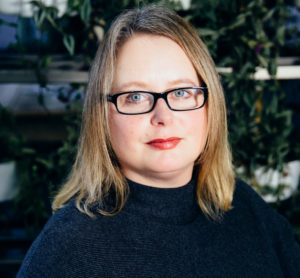Diversity, equity, and inclusion (DEI) are far more than just the latest HR buzzword. Quite apart from being critical ethical practice, DEI is a great opportunity to cultivate a culture that is positive and rewarding for all involved.
Creating a DEI program that is sustainable and thriving takes commitment and intention. It doesn’t ‘just happen’ organically.
What do diversity, equity, and inclusion programs look like, and how can you put them into action?

DEI. What does it mean?
Diversity.
Diversity in the workplace is more than just the visible differences between people. It does include the obvious, race, gender, age, sexual orientation, and ability for example. But it also refers to the things you can’t see.
Diversity also includes the differences you can’t see. For example, educational background, family structure, and lived experiences. These factors change views, opinions, and working approaches. It is these nuances that help to build a diverse workforce and team.
Equity.
Equity is the process that ensures organisational systems are fair. Equity means that there are fair and impartial opportunities and outcomes for everyone.
Inclusion.
Inclusion is the process of making sure people feel a sense of connection and belonging in the workplace.

How to build a rich DEI culture.
Here are some tips to help you create a rich DEI culture.
Get buy-in.
DEI is far more than just a box to be ticked. It must be integral to the DNA of the business. From the top executives in the corner office and all the way down, it must be meant.
To achieve this, you need buy-in. Buy-in results from being clear about your DEI mission and communicating this to your team. Employees and leaders should welcome and seek out diverse input Openness and clarity will help to embed your intentions within the team and organisation.
Belonging.
Feeling like you belong allows you to be more fearless in your approach. You feel safe expressing views and ideas amid a culture where mistakes and learning are valued. Employees who feel they belong bring their whole selves to work. They contribute creatively and can express themselves.
In an environment where there is no fear, employees bond, and high-performing teams are built.

Widening your talent pool.
One way to make sure your inbox is filled with diverse applicants is to source your candidates from a range of different places. Focussing on the same places repeatedly will only result in creating a talent pool lacking diversity.
Instead, you may like to seek out opportunities to reach out to candidates from diverse groups. For example, there are many online groups dedicated to women in STEM. This is a great way to actively connect with skilled female candidates, instead of waiting for them to possibly reach out to you.
Offer internships to targeted groups.
Many companies have taken an active position in improving their diversity procedures by starting internal diversity programs by offering internships to candidates from specific backgrounds.
You might like to consider reaching out to schools, colleges, or universities in your area to make connections with students or graduates. Community Groups are also often a great resource and have their own programs to encourage growth. Teaming up with these organisations is a great way to proactively improve your diversity hiring.
Are you interested in learning more about how you can improve your diversity recruitment practices? Read our guide here.

Promote diversely.
Take care to ensure that there are no imbalances within your internal promotion and vertical movement. Be aware of needing representation when you promote from within.
Well-rounded management is critical for progressive organisations.
Highlight your efforts.
Candidates from diverse groups will seek out companies who truly value DEI and are proactive about DEI initiatives.
Highlight your DEI policies on public forums and actively promote the work you are doing on your social media pages. You might like to record your employees’ stories and include these as part of your corporate personality on your website, for example.
Pay equity.
Be transparent about your pay scales and publish the bandings you use. Secrecy and opaque pay practices drive a wedge between teams. Make sure recognition and reward are equally spread among departments and individuals. This will help you create a more cohesive and inclusive team. Scarcity of resources breeds contempt and competition.

A diverse team in numbers.
A diverse, equal, and inclusive setting creates better teams that are motivated, productive, and creative.
Here is how a diverse workforce can impact your bottom line.
- Companies that have a diverse management team yield 19% higher revenue.
- Diverse companies are 1.7 times more likely to be innovation leaders in their industry sectors.
- 67% of job seekers say that diversity is a decision-maker when it comes to considering joining a company.
- 85% of CEOs said that having a diverse workforce improved their bottom line.
DEI – The takeaways.
- Creating a culture rich in diversity, equity and inclusion is an ethical moral decision. As an organisation, it is something you need to work on. It won’t just happen by chance. DEI goes beyond the differences we can see. It is also about hidden differences; ones that are nuanced and change the way people see or walk through the world.
- Inclusive spaces are creative, motivational, and full of learning. They allow people to experiment with support and negate the fear and shame of failure. Inclusion can be cultivated by being generous with praise, appreciation, and reward; scarcity does not breed inclusivity.
- Equity means being fair with opportunity, access to learning, promotion, and salary. Business leaders can create an equitable business by creating published, transparent pay grades that ensure everyone doing equal work is compensated equally.
If you found this advice helpful, you may want to head over to the Employer Advice pages of our blog.
Recent articles include –
Why can’t I recruit top tech talent? Can Ignite help?





